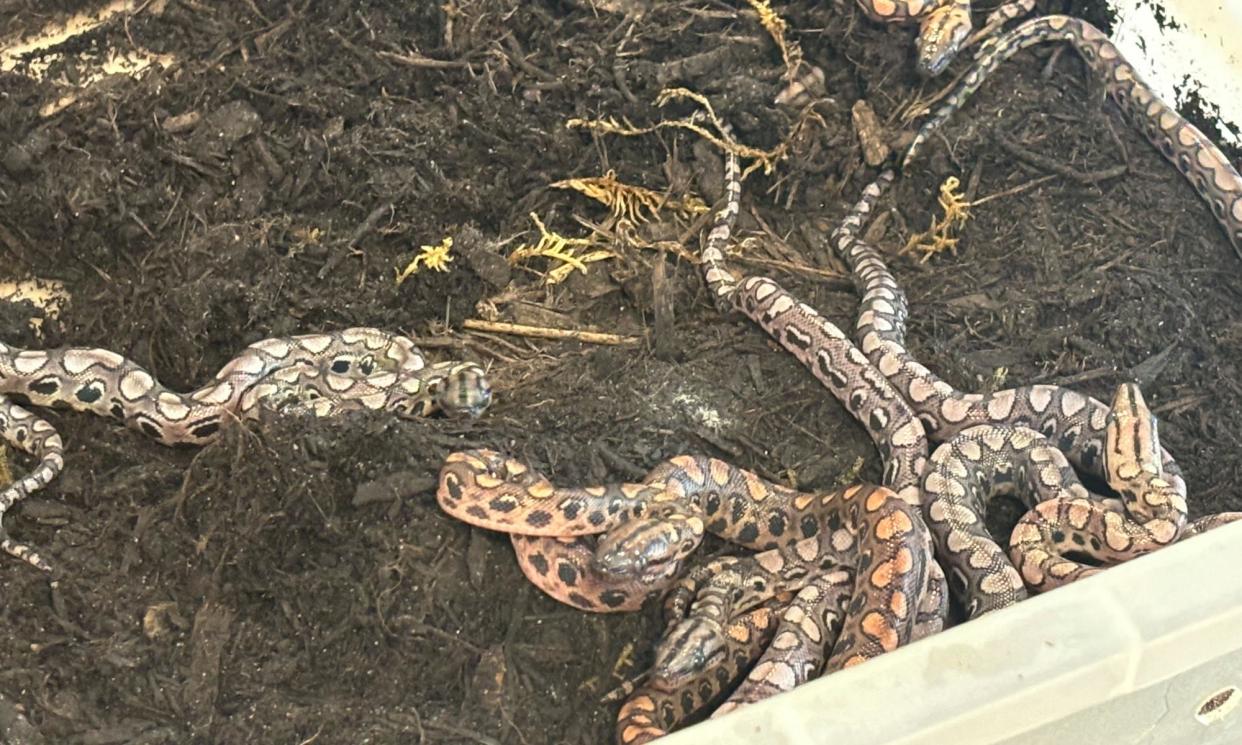‘Male’ Brazilian rainbow boa produces 14 baby snakes in ‘miracle birth’

The appearance of 14 baby snakes in a vivarium occupied by a Brazilian rainbow boa snake called Ronaldo was surprising on two counts.
First, staff at the City of Portsmouth college had thought Ronaldo was a male; second the 1.8-metre (6ft) long reptile had not been in contact with any other snakes for at least nine years.
The college called it a “miracle birth” but also explained that, actually, it was thought to be a rare example of parthenogenesis, a natural form of asexual reproduction in which embryos develop without fertilisation.
It is common in plants and some animals but this is believed to be only the third occurrence to be documented in a captive Brazilian rainbow boa anywhere in the world.
A student discovered the 14 babies during a routine check of Ronaldo’s vivarium. “At first we thought she must have been mistaken. We couldn’t believe our eyes,” said Amanda McLeod, an animal care technician.
Pete Quinlan, a reptile specialist, was called in and was equally shocked.
“I’ve been breeding snakes for 50 years and I’ve never known this to happen before,” he said. “Effectively the babies are clones of their mother although their markings are all slightly different.
“Ronaldo had been looking slightly fatter than usual, like he’d [Quinlan is still struggling to remember he is a she] eaten a big meal. We never thought for a moment that he, or should we say she, was pregnant.”
Quinlan has been taking care of Ronaldo for nine years after the snake was rehomed by the RSPCA. The boa, who had been declared male by a vet, has been a popular resident at the college for the last two years.
“It’s a fantastic opportunity for the students to learn about the development of baby snakes,” Quinlan said.
He is now occupied working out what sex the baby snakes are and setting up 14 new vivaria. Once the snakes have matured sufficiently they will be going to new homes.
According to Dudley Zoo, the majority of boas give birth to about 12 to 15 babies although litters of 35 have been recorded. The young snakes are usually born about sixth months after mating and start to feed when they are 10 days old. They are 38 to 50cm long at birth, reaching 1.2 metres in the first year, with females growing larger than males.


